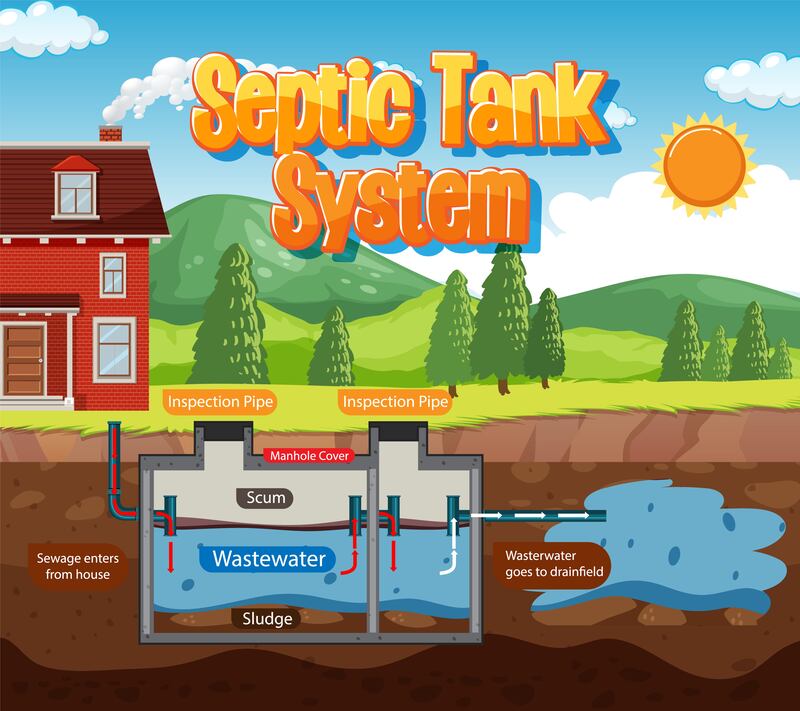
Oct 09, 2024
If you rely on a municipal sewer system for wastewater treatment in your home, you may not be conversant with the operation of a septic tank. However, those who use a septic system to process wastewater are too familiar with the advantages of a septic tank. In this article, Septic Blue of Charlotte explains how septic tanks filter wastewater.
Septic Blue of Charlotte is a premier septic company providing a full range of septic services. If you’re looking for a trusted septic service provider to install a septic tank in your home or provide maintenance services, we are the team to call.
A septic tank comprises several components, including the inlet pipe, baffle, tank, outlet pipe, effluent filter, and outlet pipe. The inlet pipe directs wastewater into the tank, where it undergoes biological decomposition. The baffle at the inlet pipe guides the wastewater through the septic tank.
Once the wastewater settles in the tank, it separates into three distinct layers: the scum layer, the effluent layer, and the sludge layer. The top layer (the scum layer) is composed of floating materials such as grease, oils, and fats. The middle layer (effluent) is clarified wastewater that forms the bulk of the tank volume. It eventually flows out of the septic tank and gets filtered in the leach field. The effluent flows out of the tank through the outlet pipe and gets filtered by an effluent filter installed on the outlet baffle. This component becomes clogged overtime; hence, it’s important to schedule regular septic tank cleaning and have it cleaned to prevent a wide range of issues.
The sludge layer comprises heavy, solid waste that settles at the bottom of the tank. This layer usually consists of human waste, inorganic solids, toilet paper, and other solid waste. The anaerobic bacteria in the tank break down the sludge into smaller-sized substances. This prevents the heavy solid waste from building up within your tank. For aerobic septic tanks, oxygen is pumped into the system to aid in breaking down the sludge.
After the heavy sludge has been broken down into simpler substances, the remaining solids and liquids are removed from the tank through septic tank pumping. This process should be carried out by experienced septic technicians to avoid septic tank damage. The solids should be removed before they build up and block the outlet pipe. Septic technicians recommend hiring a licensed septic service provider to pump out the solids before they exceed one foot in depth. It’s also advisable to empty the tank when the scum level reaches six inches thick. The experts at Septic Blue of Charlotte are here to help you empty your septic tank. We also provide professional septic tank repair.
The effluent inside a septic tank is dispersed in the drain field, also known as a leach field. This is an absorption area comprising perforated pipes laid in gravel-filled trenches. The drain field disperses treated effluent into the soil, where it’s naturally filtered and absorbed.
When you’re in need of dependable septic tank service, contact the pros at Septic Blue of Charlotte. We are licensed and insured septic experts providing reliable services, including septic tank installation, drain field installation, septic system inspections, and more.